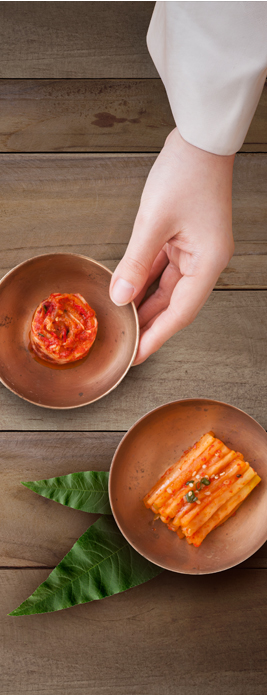
Well Being & Bangjja Yugi
Since the Lee Dynasty of old Korea, the Kings were served on their dinner tables (Surassang or ¡°King¡¯s dinner table¡±) only with Bangjja Yugi. It has been known since ancient times that if there is any poison or spoiled food in the dish, the dish, plate or bowl shows a different color. To find out the scientific reasons, many research institutes have experimented with the effectiveness of Bangjja Yugi compared to other materials.
Even the Korean Broadcasting Station (KBS) filmed a documentary to show why Koreans used Bangjja Yugi as their tableware. The documentary on Bangjja Yugi made by KBS in 2005 was awarded a grand prize and had a very high percentage audience rating. One of the results shown was that the copper sterilizes all of the enteropathogenic escherichia coli, O157, colon bacillus, and other germs or bacteria causing food poisoning. The 78:22 ratio in Bangjja Yugi was found to be the most favorable to eradicate the bacteria or germs from the dish. Beyond tableware Bangjja Yugi is a convenient tool in daily life. Buddhist monks in temples still use Bangjja razors to shave their heads because it does not cause harm such as inflammation or scars on their heads. Also, flowers kept in a Bangjja vase keep fresh and alive much longer than ones kept in other materials.
In rural areas far from Seoul, the capital of Korea, old people still use a Bangjja spoon or other tableware to keep worms and leeches off of raw vegetables before they clean them. The worms and leeches in the uncleaned vegetables flee from the Bangjja Yugi, probably because of a smell they can¡¯t live with. Tradition lives with Korean tableware.









